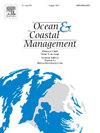白光LED灯对北方虾(Pandalus borealis)捕获和副捕获量的影响
IF 4.8
2区 环境科学与生态学
Q1 OCEANOGRAPHY
引用次数: 0
摘要
底部拖曳齿轮可能对敏感的海洋栖息地和物种产生严重和持久的影响。渔业中使用底拖曳齿轮以包括低环境影响方法(如静态齿轮)的齿轮类型多样化是减少对破坏性捕鱼方法依赖的一种方法。在这里,我们报告的试验调查如何使用白光发光二极管(led;Fishtek Marine PotLights)影响北方虾(Pandalus borealis;通常用拖网捕捞)在苏格兰西海岸的三种不同的锅中捕获。我们还捕获了有价值的挪威龙虾(Nephrops norvegicus)和没有价值的贫穷鳕鱼(Trisopterus minutus),并考虑了这些物种的发生率和捕获率。有照明的水池显著增加了单位努力渔获量(CPUE;所有锅型北方对虾的平均温度为- 1 24 h−1,最高平均为4.6±4.5,锅- 1 24 h−1(专门用于捕虾的照明虾管;range = < 0.1-11.1)。然而,尽管北方虾的CPUE由于光照而大幅增加,但这些数量并不构成商业上可行的捕捞量。此外,照明的锅导致了大量的不良鳕鱼幼鱼副渔获量(所有锅类的渔获率增加88%)和挪威龙虾的渔获量减少(所有锅类的渔获率减少48%)。在光照下,低质量鳕鱼的大量出现反映了在其他地方用同样的方法观察到的密切相关的鳕鱼(Gadus morhua)的反应,增加了光捕鱼如何在生态系统中传播的证据。最后,为了解释我们的结果,我们提出了一个“吸引力级联”假设,因为没有证据表明趋光行为。综上所述,这些结果表明,当为特定的目标物种配置锅型和捕捞区域时,照明可能会增加锅渔业的CPUE甚至无饵捕捞,并为北方虾的拖网捕捞提供替代方案。本文章由计算机程序翻译,如有差异,请以英文原文为准。
Effects of illumination and pot design on catch and bycatch when targeting northern shrimp (Pandalus borealis) using white LED PotLights
Bottom towed gears can have severe and long-lasting effects on sensitive marine habitats and species. Diversification of gear types in fisheries using bottom towed gears to encompass low environmental impact methods, such as static gear, is one way to reduce dependency on damaging fishing methods. Here we report on trials investigating how the use of white Light Emitting Diodes (LEDs; Fishtek Marine PotLights) affect catch rates of northern shrimp (Pandalus borealis; normally caught using trawls) across three different pot designs off the west coast of Scotland. We also caught the valuable Norway lobster (Nephrops norvegicus) and valueless poor cod (Trisopterus minutus) and considered occurrences and catch rates of these species. Illuminated pots resulted in significant increases in catch per unit effort (CPUE; ind. pot−1 24 h−1) of northern shrimp for all pot types up to maximum mean of 4.6 ± 4.5 shrimp pot−1 24 h−1 (illuminated shrimp tubes specifically designed to catch shrimp; range = <0.1–11.1). However, despite the substantial increase in CPUE of northern shrimp due to illumination, these quantities do not constitute commercially viable catch volumes. Furthermore, illuminated pots resulted in high juvenile poor cod bycatch (88 % increase in catch rates across all pot types) and reduced catches of Norway lobster (48 % reduction in catch rates across all pots). The high presence of poor cod in catches in response to illumination mirrors the response observed for the closely related cod (Gadus morhua) using the same methods elsewhere, adding evidence on how fishing with light propagates in ecosystems. Finally, to explain our results we propose an ”Attraction Cascade” hypothesis, as there is no documented evidence of phototactic behaviour. Taken together, these results suggest that, when pot type and fishing area are configured for specific target species, illumination may offer promise of increased CPUE and even baitless fishing in pot fisheries and an alternative to trawl fisheries for northern shrimp.
求助全文
通过发布文献求助,成功后即可免费获取论文全文。
去求助
来源期刊

Ocean & Coastal Management
环境科学-海洋学
CiteScore
8.50
自引率
15.20%
发文量
321
审稿时长
60 days
期刊介绍:
Ocean & Coastal Management is the leading international journal dedicated to the study of all aspects of ocean and coastal management from the global to local levels.
We publish rigorously peer-reviewed manuscripts from all disciplines, and inter-/trans-disciplinary and co-designed research, but all submissions must make clear the relevance to management and/or governance issues relevant to the sustainable development and conservation of oceans and coasts.
Comparative studies (from sub-national to trans-national cases, and other management / policy arenas) are encouraged, as are studies that critically assess current management practices and governance approaches. Submissions involving robust analysis, development of theory, and improvement of management practice are especially welcome.
 求助内容:
求助内容: 应助结果提醒方式:
应助结果提醒方式:


